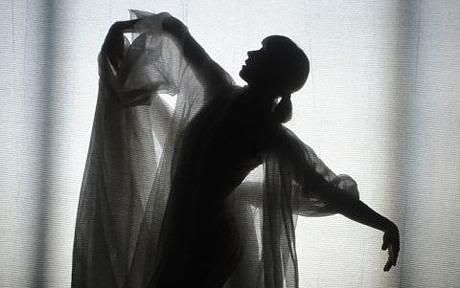
Eonnagata
Sadler's Wells Theatre
With Eonnagata we are presented a showcase of three great performers. Like a trio of musicians, who have to slowly tune their individual instruments to see what works best, they create three distinct impressions of the performance with the ability to leave the audience utterly bedazzled. But despite the grand scale of the production, it is the personal touches that make it worth seeing. Light, delicate touches that show personal commitments to real theatre making.
Robert Lepage has made a name for himself through the ingenious story-telling techniques he adopts employing a diverse spectrum of text, body language and stagecraft. Add to this the stunning physical vocabulary of Russell Maliphant and Sylvie Guillem, as displayed in their award winning Push, and the stage becomes a wash with bright colours and flowing bodies.
Alexander McQueen’s costumes, both technically perfect and visually astonishing, add weight to the evening’s proceedings. These costumes help set out the identities of each character, and these identities are shaped by what they physically wear and the way it moves in time with each dancer’s body. The costumes become almost an added limb of the dancer’s body.
Here is a performance providing a feast for the senses refusing to operate a simply visual level but seeking to draw each and every audience member in deeper.
Rather than exist as a secondary element, the lighting design of Eonnagata, created by Michael Hulls, is strongly pronounced, making statements and directing both the action and our reaction to the show. In single, magical moments the objects and lighting combine to transform the space step by step in front of the audience. Likewise, Jean-Sebastien Cote’s soundscape accents the movements of the dancers and gently coaxes characters into subtle, intimate and less physical moments that prevent the performance from becoming a sensory overload.
However, a large question mark hangs over the role of text in this performance. At times words appear as a guiding narrative to be adhered to and understood. At others, they become mere decoration, superimposed and over taken by all else happening on stage. The strong accents, soft voices and loud music means that it is often difficult to make out what is being spoken and it is worth considering what number of the audience can actually understand the uttered words. Or do people feel awakened from morbid routines and free from thoughts generated by words, with an urge to move and experience the surroundings in a different perspective?
Here there is no real conflict between text and the physical or visual theatre. The latter reigns supreme. The three artists display the personalised theatre they have created and it is their physical presence that both creates the piece and makes it irreplaceable.
Ingrid Hu





No comments:
Post a Comment